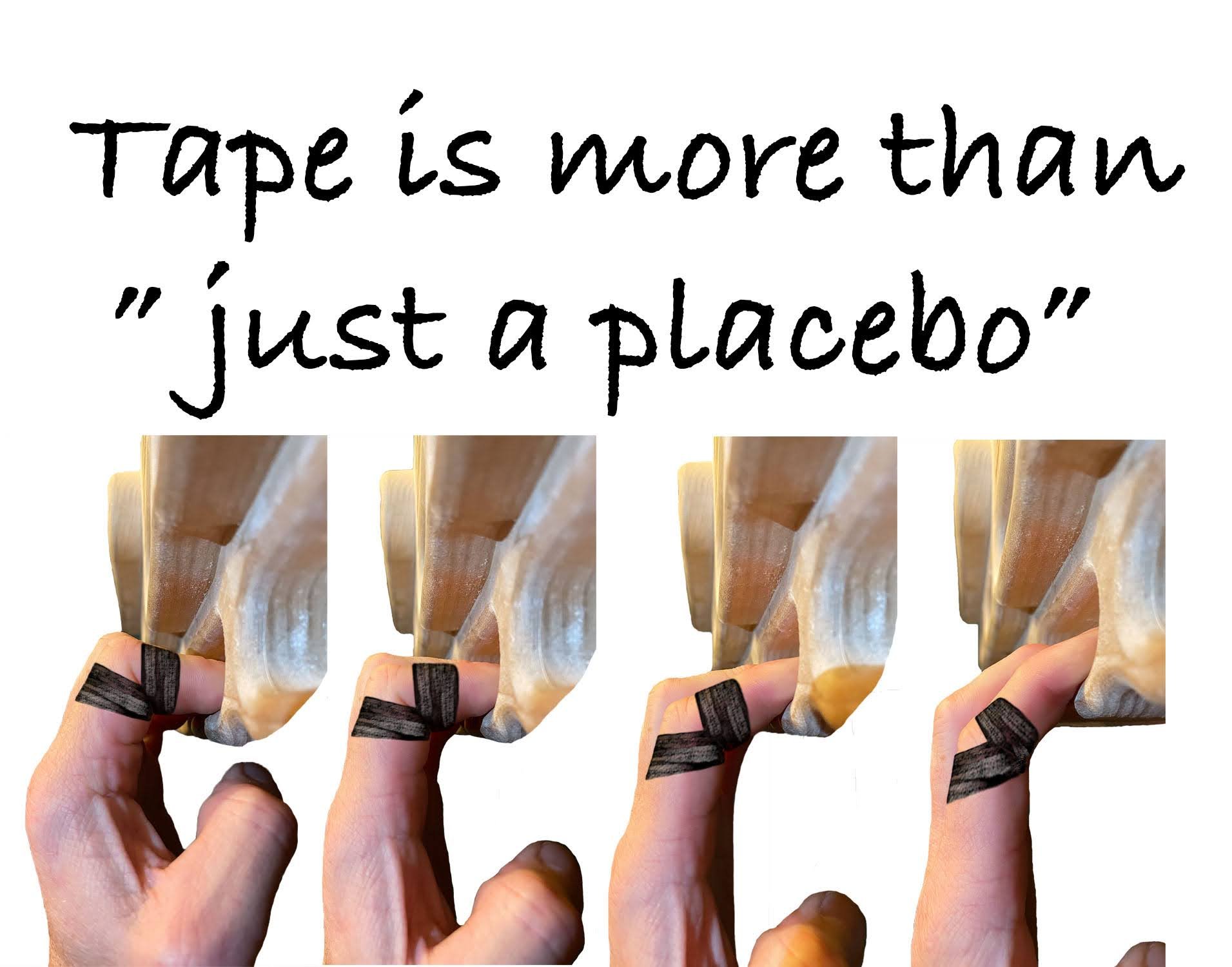Finger Taping: Is It Good or Bad?
Taping is complicated.
Tape use has nuance, especially with injuries. Regarding pulley injuries, it reduces stress while re-introducing loads. But reducing stress to prevent an injury doesn’t make sense.
Put another way, taping should be part of progressive rehab plan, not a method to prevent one.
Climbers often think, “Just wrap some tape around your sore finger, and you're good". I know I have done this in my past. But, unfortunately, that is risky. So below, I've listed some pros and cons.
pros of finger taping for climbers
Provide structural support and reduce pulley stress. H-tape method (shown) for the A2, A3, and A4 is likely best. You'd use a different approach for collateral ligament and volar plate injuries.
Provide proprioception (awareness) to the joint. This can improve performance by giving the brain better spatial awareness.
Modify PIP joint range of motion. We know that hyperflexion (full-crimp) increases stress to the pulleys. Taping the finger (H-tape + circular tape) makes it more challenging to use.
Reduce pain. Bracing a joint feels safe and reduces stress and anxiety. Taping, however, is not a proper brace for complete ruptures.
cons of finger taping for climbers
Providing structural support is not preventative necessarily. There's a reason your finger is sore; listen to it. At some point, you have to back off the volume.
Too much confidence by taping the finger leads to further overuse. Unfortunately, this is common in youth climbers with finger pain. If a youth climber is taping their finger because of pain, they need to see a healthcare provider.
Modifying ROM for too long can reduce it long-term.
Reducing pain can be tricky. Pain isn't the best indicator of tissue injury. Conversely, pain reduction isn't the best indicator of tissue health.
Key takeaways:
As with anything, taping isn't "good" or bad" for a finger injury. It's all about context.
With complete rupture rehab, taping the finger is useful when loading.
With pulley sprain rehab, I suggest clients use taping as needed, knowing we want to stop using it when their confidence builds.
The ultimate result on tissue health comes from finding a better balance between stress and recovery.

